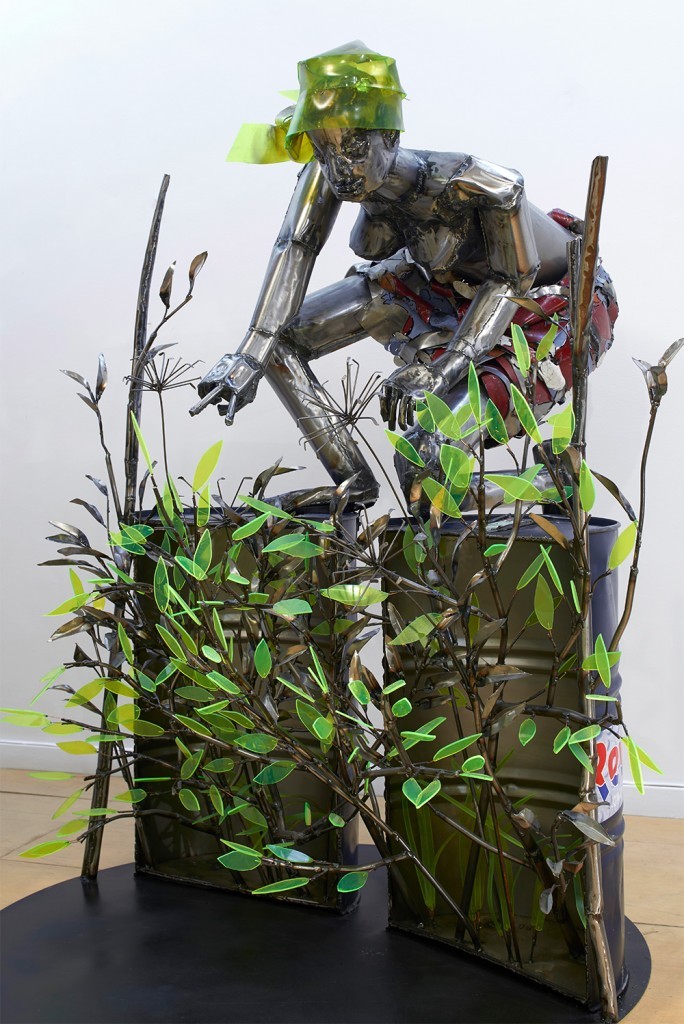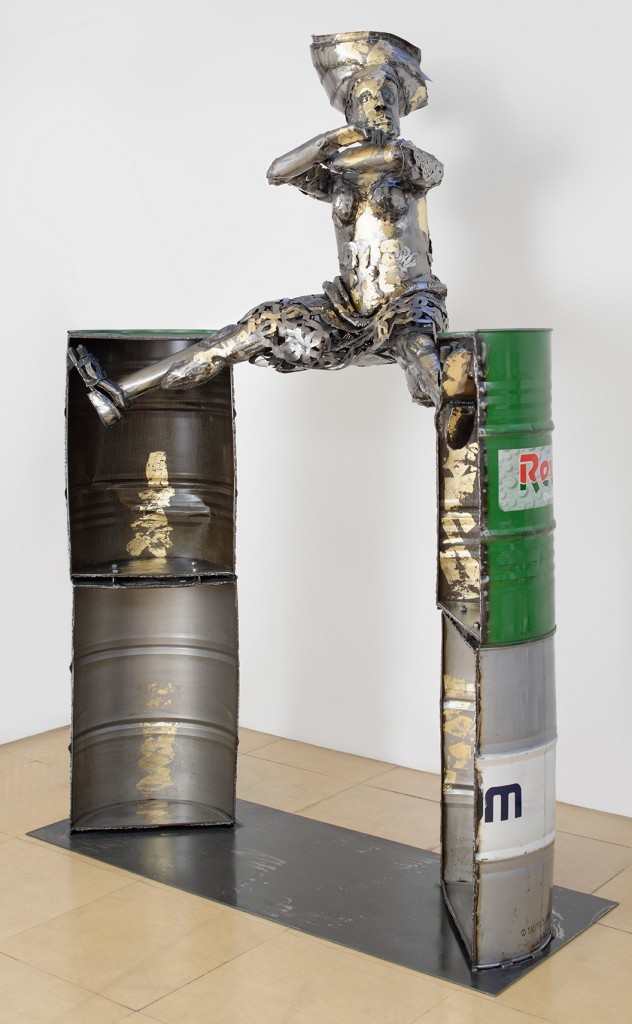
In Collection: ‘Big Masquerade with boat and household on his head, 1995, British Museum London
About:
Sokari Douglas Camp, sculptor: ‘I was not good at painting so I tried sculpture, as I liked putting my hand in my work’
Sokari Douglas Camp CBE lives and works on a small street in Elephant and Castle in south London. Her husband, Alan Camp, an architect, designed their gracious house/studio 26 years ago. Entering through the front door I am immediately immersed in a magical Douglas Camp forest composed of monumental metallic trees.
 Green Leaf Barrel, 2014.
Green Leaf Barrel, 2014.
Born in Buguma, Nigeria, in 1958, she was raised by Robin Horton, her anthropologist brother-in-law who “mailed” her off to an English boarding school aged eight. She went back briefly to Nigeria after studying in England and met her husband there. Camp was teaching architecture and travelling: “I visited parts of Nigeria that I would never have visited if I just went home.”
She studied painting, briefly: “I was not good at painting so I thought I should try sculpture, as I liked putting my hand in my work.” She has never had assistants preferring to make all her own work. “It is totally natural for me to make the work myself.”
 Looking for Grace, 2013.
Looking for Grace, 2013.
Africa infuses all of her thinking and her figures engage with the varying story of her country. “I have a dream that the Niger Delta will be cured even though it is dying of oil pollution.” Nearby, a recent sculpture of a female figure squats on an oil barrel; it is split open and on the floor there is a pool of oil. Out of the barrel protrude branches topped with green Perspex leaves.
 Material Salsa, 2012.
Material Salsa, 2012.
Underneath the affable surface, Douglas Camp is a woman who has fought to have her message seen. She has shown in unusual places; her slave figures appeared in St Paul’s Cathedral, then moved to outside the mayor’s building in Southwark. They have travelled around England as well, although they have yet to find a permanent installation. Today they lounge around the studio.
Listening to the radio this morning and seeing images of fearless health workers has turned her thoughts to Ebola. In a new group of works, which cross the drawings of William Blake and Eduardo Paolozzi with her own specific, raw style, the figures attack the virus, beating it with the energy that is particular, she says, to African women.
 All that glitters, 2014.
All that glitters, 2014.
“When you meet Nigerians they are incredible. Their energy is incredible,” she says, recalling a Nigerian woman she met recently. “She said, ‘You people in London are so spoilt. Before I could send emails today, I had to go and get the oil to run the generator.’ You have to create the wheel everyday.” (from The Independent, April 17, 2015)
